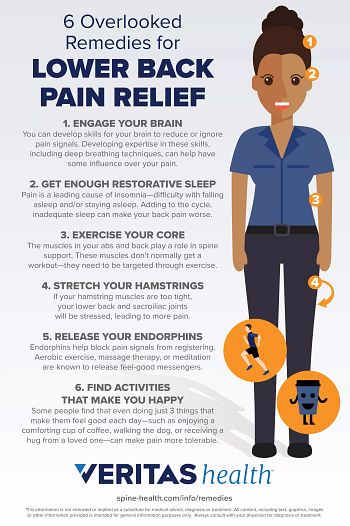
Although you’d prefer to avoid bed rest for backache symptoms, the best thing you can do is try to keep yourself active. While you may feel some pain during exercise, this discomfort will subside in a few minutes, and it will be much easier to deal with. If you find that your backache is more persistent or worsens at night, consult a doctor. Treatment for backache can include chiropractic adjustments, yoga, or bioelectric therapy.
The pain in your back can originate from anywhere along the spinal cord. The pain can be dull and constant, or it can be accompanied by pins and needles. The type of treatment depends on the severity of your condition and the duration of your pain. Your health care provider will perform tests to diagnose the cause of your pain and make recommendations for treatment. You can consult with a chiropractor or osteopath if you experience any of these symptoms.
Symptoms of backache include a sharp, aching pain in the lower spinal region, or a generalized ache that spreads to the buttocks and legs. If you experience pain in more than one area of your body, consult a physician. Taking steps to maintain your body is important to prevent the pain from recurring. It will also prevent you from developing any future conditions related to backaches. However, it’s essential to take a rest from your regular activities if your pain persists.
If your backache pain is persistent, your doctor will likely prescribe a treatment plan to reduce the pain. In the meantime, you may need to refrain from doing any normal physical activity for 48 hours to reduce the swelling. If your backache persists, you can apply heat or ice to the area to minimize the pain. Over-the-counter pain relievers are available to alleviate the discomfort. Read the instructions on the package carefully to avoid over-medication.
A backache is a common medical condition. Over 100 million Americans experience chronic back pain. It’s not uncommon for people to experience acute pain while doing everyday tasks. But, it’s important to seek medical attention right away because it may be a sign of a more serious condition. For example, a sharp pain can indicate a torn muscle or a problem with an internal organ. In some instances, it may be a sign of a complication that affects the nerves, such as a kidney.

If your back pain symptoms include sharp, localized pain in the lower part of your spine, you should contact your doctor immediately. It can be simple back pain caused by an injury or spinal sprain. But if the pain persists or continues even after a few hours, you should immediately consult a doctor. Your doctor may prescribe medication to help relieve your pain. A prescription for an anti-inflammatory drug is often sufficient.
Back pain symptoms can occur anywhere in the spinal cord. They can range from a dull ache to a sharp spasm. The severity of your back pain and how long it lasts will determine the treatment needed. You can also treat pain on your own with a few simple home remedies. In severe cases, physical therapy may be required. A chiropractor, osteopath, or spine specialist can help you address the source of your pain and improve your quality of life.
The most important thing you can do to treat back pain is to move. Your doctor may suggest a few days of bed rest for short-term recovery. You also need to keep your muscles moving. If you can’t, try ice packs, heating pads, and other home remedies. While these methods can help relieve your pain, you should seek medical attention for back pain if you want to avoid prolonged or prolonged bed rest. Read up-to-date information on the treatment of back problems at Productos de Salud.
Although the symptoms of back pain vary from person to person, they are usually associated with certain activities. If you have mild back pain, it’s unlikely to be serious, but it could still indicate a more serious problem. If your pain is sharp or radiating, you have probably torn a muscle or internal organ. If the pain radiates, it may be a sign of a spinal compression problem.
About the author